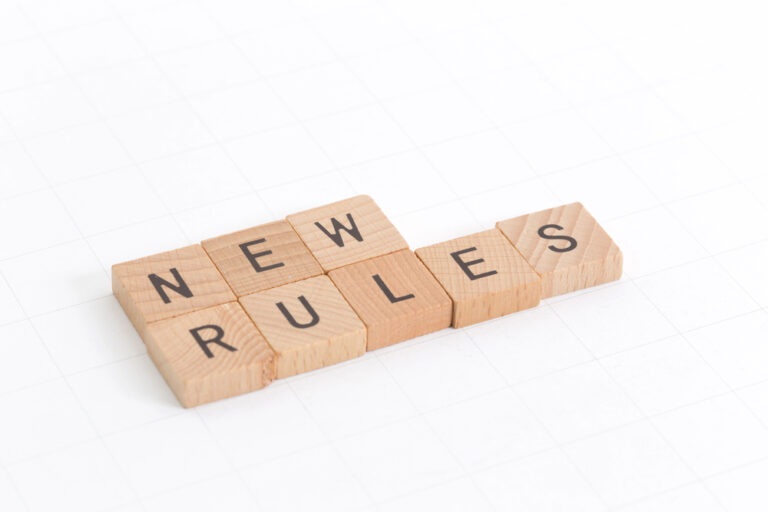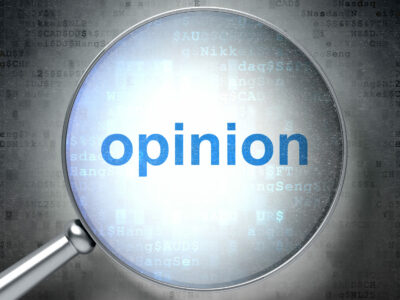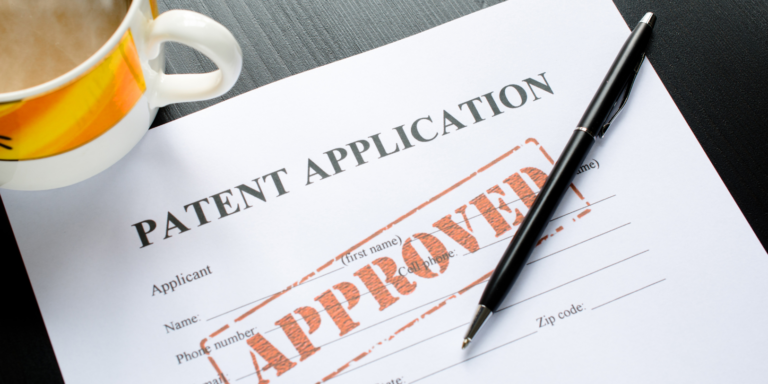This case addresses the standard for determining the obviousness for design patents.
§ I. Patent Cases
LKQ Corp. v. GM Global Tech. Ops. LLC, 102 F.4th 1280 (Fed. Cir. 2024)
Facts: This case addresses the standard for determining the obviousness for design patents.
LKQ Corporation challenged the validity of GM Global Technology Operations LLC’s design patent for a vehicle part, asserting that the patent was obvious under 35 U.S.C. § 103. The Patent Trial and Appeal Board (PTAB) upheld the patent’s validity, applying the Rosen-Durling test, which requires using a primary reference that is “basically the same” as the claimed design to establish obviousness as the start of the obviousness analysis. LKQ appealed, arguing that the Rosen-Durling test was incompatible with the Supreme Court’s flexible approach to obviousness set forth in KSR Int’l Co. v. Teleflex Inc., 550 U.S. 398 (2007).
Held: Sitting en banc, the Federal Circuit overruled the Rosen-Durling test and adopted “a more flexible” approach for assessing design patent obviousness.
Reasoning: The Federal Circuit concluded that the Rosen-Durling test was at odds with 35 U.S.C. § 103’s “broad and flexible standard” and the Supreme Court’s precedent in KSR and Graham that provide “a more flexible approach” when determining obviousness. The court noted that the Rosen-Durling framework imposed unnecessary constraints by requiring a primary reference that is “basically the same” as the claimed design, potentially overlooking the broader context of the prior art.
The Federal Circuit determined that the framework for assessing obviousness in utility patents, as articulated in Graham v. John Deere Co., 383 U.S. 1 (1966), was equally applicable to design patents. The Federal Circuit then provided guidance for applying the Graham factors to design patents.
First, one “consider[s] the ‘scope and content of the prior art’ within the knowledge of an ordinary designer in the field of the design.” The Federal Circuit affirmed that for design patents, as for utility patents, a “reference qualifies as prior art for an obviousness determination only when it is analogous to the claimed invention.” However, the court declined to “delineate the full and precise contours of the analogous art test for design patents.” The court stated that “[p]rior art designs for the same field of endeavor as the article of manufacture will be analogous,” but did “not foreclose that other art could also be analogous.”
Second, one “determin[es] the differences between the prior art designs and the design claim at issue.” The Federal Circuit’s approach “casts aside a threshold ‘similarity’ requirement.” Instead, one “compare[s] the visual appearance of the claimed design with prior art designs . . . from the perspective of an ordinary designer in the field of the article of manufacture.”
Third, one determines “the level of ordinary skill in the pertinent art.” Fourth, as with utility patents, secondary considerations of non-obviousness, such as commercial success, industry praise, and copying, should also be evaluated.
The Federal Circuit reaffirmed that the obviousness analysis for design patents “focuses on the visual impression of the claimed design as a whole and not on selected individual features.” The court stated that “[t]he primary and secondary references need not be ‘so related’ such that features in one would suggest application of those features in the other, but they must both be analogous art to the patented design.” Finally, the court explained that “the motivation to combine these references need not come from the references themselves.”
Brumfield v. IBG LLC, 97 F.4th 854 (Fed. Cir. 2024)
Facts: This case addresses the potential for recovering damages based on foreign sales in U.S. patent infringement cases.
Brumfield sued IBG LLC for patent infringement related to software user interfaces used in commodity trading. At trial, Brumfield’s expert testified that royalties from IBG’s foreign sales were included in the damages calculation because these sales were a direct result of IBG’s domestic infringing activities. The district court excluded this testimony, agreeing with IBG that foreign sales were beyond the scope of recoverable damages under U.S. patent law. Brumfield appealed to the Federal Circuit.
Held: The Federal Circuit held that damages for foreign sales were not recoverable in this case because Brumfield had not identified a sufficient causal link to domestic infringement.
Reasoning: The Federal Circuit relied heavily on the Supreme Court’s reasoning in WesternGeco LLC v. ION Geophysical Corp., 585 U.S. 407 (2018), which allowed the recovery of lost profits for foreign sales stemming from domestic acts of infringement under 35 U.S.C. § 271(f)(2). Although WesternGeco specifically addressed lost profits and a statutory provision targeting components supplied abroad, the Federal Circuit found the case instructive for reasonable royalty damages for infringement under § 271(a). The Federal Circuit emphasized that the territoriality principle of U.S. patent law does not categorically preclude consideration of foreign sales if those sales are tied to domestic infringing activity.
The court explained that the patentee can show entitlement to damages for foreign conduct when the patentee establishes a “causal” connection between the foreign conduct and domestic infringement. To increase reasonable-royalty damages based on foreign, non-infringing conduct, the patentee must, at a minimum, show why that “foreign conduct increases the value of the domestic infringement itself.”
To attempt to establish such a causal connection between the foreign conduct and domestic infringement, Brumfield argued that IBG’s foreign sales of the accused software were directly enabled by allegedly infringing acts of designing, testing, and developing software in the U.S. However, the Federal Circuit found that the relevant patent claims were not directed to software. Rather, the claims were directed to the tangible computer readable medium (such as a flash drive) to which the software is encoded. Therefore, the Federal Circuit found that IBG’s designing, testing, and developing software in the U.S. were not acts of infringement, and, thus, were legally insufficient to establish the necessary causal connection to support damages calculations based on foreign conduct. Thus, the Federal Circuit affirmed the district court’s exclusion of IBG’s foreign sales from a calculation of damages.
EcoFactor, Inc. v. Google LLC, 104 F.4th 243 (Fed. Cir. 2024)
Facts: This case concerns the reliability and admissibility of expert testimony regarding patent damages. It is an important case to watch, as the Federal Circuit recently granted Google’s petition for rehearing en banc and vacated the panel decision, meaning that the full Federal Circuit will rehear the case and possibly reach a different result or use different reasoning than the panel decision discussed below.
Patent owner EcoFactor sued Google for patent infringement over Google’s smart thermostat products. At trial, the jury found that Google infringed and awarded EcoFactor damages.
EcoFactor’s damages expert, Mr. Kennedy, used a standard hypothetical negotiation approach for calculating reasonable royalty damages, where he analyzed the effect of three license agreements EcoFactor previously entered into with third-party smart thermostat manufacturers. Each of those prior agreements stated that the licensee would pay EcoFactor a lump sum amount “based on what EcoFactor believes is a reasonable royalty calculation of [$X] per-unit.” (The amount of the per-unit royalty is redacted from the opinion because it is confidential business information under a protective order.)
Google moved for a new trial on damages, arguing that Kennedy’s damages opinion should have been excluded from trial for being speculative and unreliable. The district court denied the motion. Google appealed to the Federal Circuit.
Held: Prior license agreements containing a lump sum payment “based on” a royalty rate may provide evidence of a reasonable royalty rate.
Reasoning: The Federal Circuit panel—affirming the district court’s decision to deny Google’s motion for a new damages trial—explained that while all damages approximations involve some degree of uncertainty, the admissibility inquiry centers on whether the methodology employed is reliable.
Google first argued that Kennedy’s proposed royalty rate was “plucked . . . out of nowhere.” The Federal Circuit panel disagreed, finding that Kennedy adequately based his proposed royalty rate on (1) the three existing license agreements and (2) the testimony of EcoFactor’s CEO that the lump sum in each of those three license agreements had been calculated using the $X royalty rate.
Google also argued that Kennedy’s damages testimony should have been excluded because the three licenses were not comparable to the hypothetically negotiated agreement between Google and EcoFactor. According to Google, the three license agreements were for EcoFactor’s entire patent portfolio, whereas EcoFactor asserted only one patent against Google. However, the Federal Circuit panel found that Kennedy accounted for such differences. Kennedy acknowledged at trial that Google would argue that the three license agreements included EcoFactor’s entire patent portfolio, and thus the $X royalty rate should be decreased. But Kennedy then explained another factor would have put upward pressure on the hypothetically negotiated rate. Specifically, while each of the three license agreements were settlements whose royalty rate reflected a risk that EcoFactor’s patents would be found not infringed or invalid, the hypothetical negotiation assumes that the asserted patent was infringed and valid. The Federal Circuit panel explained that the precise degree of comparability was a factual issue left for the jury—not a question of admissibility.
Dissent: Judge Prost dissented in part, specifically dissenting from the decision to affirm the district court’s denial of Google’s motion for a new trial. Judge Prost reasoned that the $X royalty rate rests on EcoFactor’s “self-serving” recitals in the three prior license agreements, Kennedy’s analysis is unreliable, and the $X royalty rate has no basis in the record and includes the value of unasserted patents.
Contour IP Holding LLC v. GoPro, Inc., 113 F.4th 1373 (Fed. Cir. 2024)
Facts: The Supreme Court has held that abstract ideas, natural laws, and phenomena of nature are ineligible for patenting under 35 U.S.C. § 101. This case applies the Supreme Court’s test in Alice Corp. Pty. v. CLS Bank Int’l, 573 U.S. 208 (2014) to determine whether the patent claims at issue recite merely a patent-ineligible abstract idea.
Contour sued GoPro, accusing several of GoPro’s point-of-view (“POV”) digital video cameras of infringing Contour’s patents. The asserted patents disclose a hands-free, POV video camera “configured for remote image acquisition control and viewing.” The patent specification explains that often in sports applications, such as skiing, a POV camera is “mounted in a location that does not permit the user to easily see the camera.” In these instances, the user is unable to review what is being recorded in real time or adjust recording settings, such as light level and audio settings. To address these problems, the patents describe implementing wireless technology in the POV camera that allows the camera to send real time information to a remote device, such as a cell phone. From this remote device, the user can see what is being recorded by the camera and make real time adjustments to the recording settings.
The patent specifications describe an example of the asserted claims called the “dual recording” embodiment. In that example, the patents disclose that the camera is configured to generate video recordings “in two formats, high quality and low quality, in which the lower quality file is streamed” to the remote device. This system achieves real time playback on the remote device without exceeding wireless connection bandwidth, while the higher quality version of the recording is saved on the camera for later viewing.
GoPro argued on summary judgment that the asserted claims were patent ineligible under Section 101 because they claim an abstract idea. The district court agreed with GoPro. In the first step of the Alice test, the court found that the representative claim was directed to the abstract idea of “creating and transmitting video (at two different resolutions) and adjusting the videos’ settings remotely.” In the second step, the court concluded that the claim recited only functional, results-oriented language with no indication that the physical components behave in any way other than their basic, generic tasks. Contour appealed to the Federal Circuit.
Held: Contour’s claims are patent eligible under Section 101 because the patent specification describes improving technology through specific technological means and the claims reflect that improvement.
Reasoning: Applying step one of the Alice test, the Federal Circuit characterized the scope of the asserted claims as “an improved POV camera.” The Federal Circuit explained that the asserted claims “require specific, technological means—parallel data stream recording with the low-quality recording wirelessly transferred to a remote device—that in turn provide a technological improvement to the real time viewing capabilities of a POV camera’s recordings on a remote device.”
The Federal Circuit explained that the district court’s Alice analysis “characterizes the claims at an impermissibly high level of generality.” This “generalized articulation” of the claims “all but ensured the incorrect conclusion that the claims were drawn to an abstract idea.” For example, the Federal Circuit rejected GoPro’s argument that Contour’s claims “are simply directed to the abstract idea of wireless network communication.” Instead, the claims enable the claimed POV camera to “operate differently than it otherwise could.”
The Federal Circuit also rejected GoPro’s argument that the claims “simply employ known or conventional components that existed in the prior art at the time of the invention.” Rather, the “dual embodiment” claimed by Contour was not “a long-known or fundamental practice supporting patent ineligibility.”
Because it concluded at Alice step one that the claims “are directed to a technological solution to a technological problem,” the Federal Circuit found that the claims are patent-eligible without needing to proceed to the second step of the Alice test.
Allergan USA, Inc. v. MSN Labs. Private Ltd., 111 F.4th 1358 (Fed. Cir. 2024)
Background: Patent applicants can file patent applications that have the same specification as, and claim priority to the filing date of, an earlier patent application. An earlier application to which a later application claims priority is called a parent and the later application is called a child. In prior cases, the courts developed a legal doctrine called “obviousness-type double patenting” to restrict patent applicants from extending their patent protection by obtaining obvious variants of patent claims in different patents with different expiration dates. Patent term adjustment extends the expiration date of a patent under certain circumstances when examination of the patent was delayed.
Facts: This case concerns whether obviousness-type double patenting can invalidate a first-filed, first-issued patent that expires earlier than a child patent due to patent term adjustment.
In 2019, Sun Pharmaceutical Industries (Sun) submitted an Abbreviated New Drug Application (ANDA) seeking FDA approval to market and sell a generic version of Viberzi®. Allergan then sued Sun, alleging that the filing of Sun’s ANDA directly infringed one of Allergan’s patents, which had over 1,000 days added to its expiration date because of patent term adjustment. While the litigation was pending, the Patent Office issued new patents that were continuation patent applications of the issued patent (child patents). Sun argued that the later-expiring parent patent was invalid for obviousness-type double patenting over the child patents. The district court found the parent patent invalid for obviousness-type double patenting. The district court concluded that the later expiration date from the patent term adjustment led to an unjust extension of patent term, violating the principles of obviousness-type double patenting. Allergan appealed.
Held: A first-filed, first-issued, later-expiring patent claim cannot be invalidated for obvious-type double patenting based on a later-filed, later-issued, earlier-expiring child patent when the patents share a common priority date.
Reasoning: The Federal Circuit explained that the purpose of obviousness-type double patenting is to prevent patentees from obtaining a second patent on a patentably indistinct invention to effectively extend the life of a first patent to that subject matter. The court further explained that the parent patent, in this case, is undoubtedly the first patent, whether measured by filing date or issuance date. Thus, the patent-term-adjusted term of the parent patent does not implicate obviousness-type double patenting because the parent patent is not a “second, later expiring patent for the same invention.”
The Federal Circuit noted the parent patent defined the initial scope of exclusivity for the invention, and the child patents derived from the same original application but were filed later. The Federal Circuit explained that the parent patent cannot be invalidated by the child patents merely because the parent patent had a longer term due to patent term adjustment. Invalidating earlier-filed patents in this scenario would undermine the purpose of patent term adjustment, which is to compensate for delays in patent prosecution, and would create an unjust scenario where a patent owner would lose the benefit of a duly awarded extension.
The Federal Circuit distinguished a prior case that held that a later-issued but earlier-expiring patent can qualify as an obviousness-type double patenting reference to invalidate an earlier-issued but later-expiring patent. The Federal Circuit explained that the case focused on issuance dates, not filing dates. In the earlier case, the challenged claims of the asserted patent were filed after, claimed a later priority date than, and expired after the reference claims, which resulted in an unwarranted extension of patent term for an invention that had already been the subject of an earlier-filed, earlier-expiring claim. In contrast, Allergan’s asserted claim was filed before, shared a priority date with, and issued before the reference claims of the patents asserted for obviousness-type double patenting. Thus, because Allergan’s asserted patent was the first patent in its family to be filed and to issue, it did not extend any period of exclusivity on the claimed subject matter.
Accordingly, the Federal Circuit reversed the district court’s finding of obviousness-type double patenting.
IOENGINE, LLC v. Ingenico Inc., 100 F.4th 1395 (Fed. Cir. 2024)
Facts: This case relates to the printed matter doctrine, under which a patent claim limitation is not afforded patentable weight when it claims the contents of information.
Ingenico filed petitions for inter partes review at the patent office challenging the validity of many claims in three of IOENGINE’s patents. Ingenico argued that several claim limitations requiring “encrypted communications” and “program code” were entitled to no patentable weight under the printed matter doctrine. The Board agreed with Ingenico, finding that these limitations were subject to the printed matter doctrine because they claimed the content of information being communicated. The Board relied on this finding to determine that claims reciting these limitations were anticipated by prior art. IOENGINE appealed.
Held: Claim limitations requiring encrypted communications or download of program code are not subject to the printed matter doctrine because they are directed to the act of communication itself, not the content of the communication.
Reasoning: The Federal Circuit applied a two-step test for whether the claim limitations at issue should be accorded patentable weight under the printed matter doctrine. The first step is determining whether a claim limitation is directed to printed matter. If the first step is not satisfied, the inquiry ends there. Only if the first step is satisfied should a court proceed to step two and consider whether the printed matter should nevertheless be afforded patentable weight.
The Federal Circuit first looked to whether the limitation reciting the “transmission of encrypted communications” claimed printed matter. The printed matter doctrine is implicated when a limitation “claims the content of information.” The Federal Circuit explained the “fact there is a communication itself is not content; content is what the communication actually says.” The Federal Circuit further explained that the form of communication, such as whether the communication is encrypted, is not content. The Federal Circuit concluded that the “transmission of encrypted communications” limitations did not claim the content of the communication, and, thus, were not directed to printed matter.
The Federal Circuit then analyzed the limitations reciting the download of “program code.” Similarly, the Federal Circuit reasoned these limitations claimed the act of communication itself, not the content of what is communicated in the program code. Thus, the “program code” limitations were not directed to printed matter.
Because the limitations reciting “encrypted communications” and “program code” were not “claimed . . . for the content they communicate, they are not printed matter.” Accordingly, the Federal Circuit did not need to proceed to the second step. Because Ingenico’s only ground of invalidity relied on their printed-matter argument, the Court reversed the Board’s invalidity determination as to the claims at issue.
Sanho Corp. v. Kaijet Tech. Int’l Ltd., Inc., 108 F.4th 1376 (Fed. Cir. 2024)
Facts: This case contrasts a 35 U.S.C. § 102(b)(2)(B) public disclosure by the inventor, which prevents some later disclosures of the same subject matter from being treated as prior art to invalidate a patent claim, from a 35 U.S.C. § 102(a)(1) public use, which generally is prior art.
Kaijet petitioned for inter partes review challenging claims of a patent owned by Sanho on grounds that the claims were obvious. Each obviousness combination included a U.S. patent application publication known as Kuo, which had an effective filing date before the Sanho patent.
Before the effective filing date of the Kuo reference, the inventor of the challenged patent had offered to sell a “HyperDrive” device to Sanho’s owner. Shortly thereafter, an agreement was reached to sell 15,000 HyperDrive devices to Sanho, but no sale was completed before the Kuo reference’s effective filing date. Sanho argued that, because the HyperDrive device embodied the invention of the challenged patent, it should qualify as a disclosure by the inventor under Section 102(b)(2)(B) thereby disqualifying the Kuo reference as prior art. The Board disagreed, holding that the sale was not a Section 102(b)(2)(B) public disclosure. Accordingly, the Board found all challenged claims invalid as obvious. Sanho appealed to the Federal Circuit.
Held: An invention is not “publicly disclosed” under 35 U.S.C. § 102(b)(2)(B) by the inventor’s private sale, even though a third party’s private sale may constitute an invalidating “public use” under 35 U.S.C. § 102(a)(1).
Reasoning: The Federal Circuit explained that placing a device that embodies an invention on sale does not necessarily publicly disclose the invention under Section 102(b)(2)(B). First, the Federal Circuit looked to the language of the relevant statute. The court reasoned that the distinct use of “disclosed” in one section and “publicly disclosed” in another “suggests that Congress intended the phrases to have different meanings” and that the narrower term, “publicly disclosed” should encompass a “narrower subset of ‘disclosures.’”
Second, the Federal Circuit looked to the purpose of the exception provided in Section 102(b)(2)(B). The court explained the purpose of this section is to protect an inventor “who discloses his invention to the public before filing a patent application” by making it available to the public. The exception is not intended to protect an inventor who, to the contrary, keeps the invention private. Sanho’s proposed interpretation that a private sale falls within this exception runs contrary to the “purposes of the statutory scheme” and is inconsistent with reading the statute “as a whole.”
The Federal Circuit then briefly turned to the legislative history which further supported that “‘public disclosure’ requires that the invention be made available to the public.”
Lastly, the Federal Circuit addressed Sanho’s argument that “‘publicly disclosed’ incorporates earlier judicial interpretation of the word ‘public’ in the context of invalidating ‘public use.’” The court reasoned that no evidence supports that Congress intended such an interpretation. Moreover, the distinct terms “publicly disclosed” and “public use” are found in distinct sections that “serve fundamentally different purposes.” Thus, although public disclosure could result from public use, the two are not equivalent.
Applying its reasoning to the facts of this case, the Court held that the sale of HyperDrive devices “did not ‘publicly disclose’ the relevant subject matter.” Rather, the sale constituted only a private sale to Sanho and “there was no teaching of the features of the invention to others beyond Sanho.” Therefore, the Federal Circuit affirmed the Board’s finding that Kuo is prior art and that the challenged claims would have been obvious.
§ II. Copyright Cases
Warner Chappell Music, Inc. v. Nealy, 601 U.S. 366 (2024)
Facts: This case resolves a circuit split regarding time limitations on monetary recovery for copyright infringement claims under the Copyright Act.
In 2018, plaintiff and copyright holder Nealy sued Warner Chappell for copyright infringement, claiming infringing activity dated back to 2008—ten years before he sued.
The Copyright Act’s statute of limitations provides that a copyright owner must bring an infringement claim within three years of its accrual. See 17 U.S.C. § 507(b). Thus, to show that his claims were timely, Nealy invoked the “discovery rule,” under which a claim accrues when the plaintiff discovers, or with due diligence, should have discovered, the infringing activity.
In the District Court, Warner Chappell accepted that the discovery rule governed the timeliness issue but argued that Nealy could only recover damages for infringing acts occurring in the last three years. The District Court agreed with Warner Chappell, relying on a Second Circuit case limiting monetary relief to three years prior to filing. The Eleventh Circuit reversed, rejecting the notion of a three-year damages bar on a timely claim.
Held: In a 6–3 decision, the Supreme Court held that the Copyright Act entitles a copyright owner to obtain monetary relief for any timely infringement claim, regardless of when the infringement occurred. For purposes of its decision, the Court assumed the discovery rule applied because Warner Chappell had not challenged the rule’s applicability. The majority declined to decide whether the discovery rule applies to copyright infringement claims generally.
Reasoning: The majority first analyzed the text of the Copyright Act. Finding that the Act’s remedial sections do not provide a time limit on monetary recovery, the majority held that a copyright owner possessing a timely claim is entitled to damages, no matter when the infringement occurred.
The majority next distinguished the Supreme Court’s earlier decision in Petrella v. Metro-Goldwyn-Mayer, Inc., 572 U.S. 663 (2014), which stated that the Copyright Act’s statute of limitations allows plaintiffs “to gain retrospective relief running only three years back from” the filing of suit. Id. at 672. However, in Petrella, the plaintiff had long known of the defendant’s infringement, and, thus, could not have relied on the discovery rule. Thus, the plaintiff in Petrella could not recover for infringements occurring more than three years prior because her claims were untimely, rather than due to a statutory bar.
Dissent: Justice Gorsuch dissented, joined by Justices Thomas and Alito. The dissent criticized the majority for “sidestep[ping] the logically antecedent question” of whether application of the discovery rule is proper. The dissent reasoned that traditionally, discovery rules were only applicable in cases of fraud or concealment, and thus should not be applied to run-of-the-mill copyright cases.
Philpot v. Independent Journal Review, 92 F.4th 252 (4th Cir. 2024); Griner v. King, 104 F.4th 1 (8th Cir. 2024); Hachette Book Grp., Inc. v. Internet Archive, 115 F.4th 163 (2d Cir. 2024); Keck v. Mix Creative Learning Ctr., LLC, 116 F.4th 448 (5th Cir. 2024)
Facts: In these cases, four different circuit courts apply the Supreme Court’s 2023 decision in Andy Warhol Foundation for the Visual Arts, Inc. v. Goldsmith, 598 U.S. 508 (2023) regarding transformative use, a component of fair use.
The plaintiffs in each case are copyright holders suing for unauthorized use of their copyrighted works. In Philpot, a photographer sued a news website for using his photograph of a famous musician in an online article. In Griner, the owner of an internet meme template photograph sued a former congressman’s campaign committee for posting a version of the meme on a campaign website and social media. In Hachette, book publishers sued a nonprofit digital library, challenging the library’s practice of scanning print copies of publishers’ books to create digital copies and lending those digital copies to users. In Keck, an artist sued an art studio for using his artworks in art kits for children.
Held: In Philpot, Griner, and Hachette, the courts held that defendants’ uses were not transformative and were not fair uses. In Keck, the Fifth Circuit held that the studio’s use was transformative in nature and constituted fair use.
Reasoning: Each of the circuit courts examined whether defendants’ use of the copyrighted work was “transformative” in light of Warhol.
In Philpot, the Fourth Circuit likened defendant IJR’s use of a photo of famous musician Ted Nugent to the magazine’s use of Orange Prince in Warhol. Referring to the Supreme Court’s reasoning that “[a] typical use of a celebrity photograph is to accompany stories about the celebrity,” the Fourth Circuit noted that IJR had less of a case for “transformative use” than in Warhol because unlike the orange drubbing in Warhol, IJR did not alter the Nugent photo beyond cropping the negative space.
In Griner, the Eight Circuit found that the campaign committee’s use of the “Success Kid” meme photograph was a commercial use without a further purpose, different character, or compelling justification. The court rejected the campaign committee’s stated justification—that creating and disseminating a meme on social media is a common occurrence—as non-compelling, especially in light of the commercial nature of the use.
In Hachette, the Second Circuit found that the defendant’s practice of digitizing print copies of books to lend was not transformative, because the underlying purpose of making the works available was still the same. The court found that the “digital copies do not provide criticism, commentary, or information about the originals,” or “add something new, with a further purpose or different character.”
In contrast, in Keck, the Fifth Circuit found that defendant Mix Creative’s use of an artist’s dog-theme artworks was transformative. The court rejected Keck’s framing of the issue as “the online, e-commerce sales of Keck’s entire works.” Instead, the court found that Mix Creative used the artworks for an educational purpose that was significantly different than the original, decorative purpose of Keck’s works. Mix Creative’s kits included not just prints of the artworks, but also lesson plans, PowerPoint slides, and materials for students to create their own art, inspired by Keck’s. Thus, Mix Creative used the art for what it and the additional materials could teach students, rather than for its inherent expressive value.
In each case, the party that won on the “transformative use” factor won on the overarching issue of fair use.
§ III. Trademark Cases
Vidal v. Elster, 602 U.S. 286 (2024)
Facts: This case concerns the protections of the First Amendment and the registrability of a trademark in contravention of section 2(c) of the Lanham Act.
Applicant Elster sought to register TRUMP TOO SMALL for use on shirts and hats. Elster indicated that this mark stemmed from an exchange between Donald Trump and Senator Marco Rubio during the 2016 presidential primary debate and aims to “convey[] that some features of President Trump and his policies are diminutive.” The Examining Attorney refused the application on two grounds: under Section 2(c) of the Lanham Act which prohibits registration of a mark that “comprises a name . . . identifying a particular living individual” without the individual’s “written consent”; and Section 2(a) of the Lanham Act, which bars registration of trademarks that “falsely suggest a connection with persons, living or dead.” Elster appealed the refusal, asserting that the mark was political commentary, so refusal infringed on his First Amendment rights as content-based discrimination.
The Trademark Trial and Appeal Board (“Board”) affirmed the Examining Attorney’s refusal solely on Section 2(c). The Board noted the government’s compelling interest to protect the named individual’s rights of privacy and publicity. Elster appealed.
The Federal Circuit overturned the Board’s decision, holding that the refusal to register Elster’s TRUMP TOO SMALL mark under Section 2(c) violated the First Amendment, in that such a refusal restricted the expression of criticism of a public official in the mark’s content.
The United States petitioned the Supreme Court to hear the case, and the Supreme Court granted certiorari on June 5, 2023.
Held: The Supreme Court held unanimously that the USPTO did not violate the First Amendment when it refused registration to the TRUMP TOO SMALL mark because prohibiting the registration of a trademark which contains a living person’s name, without their consent, is not a viewpoint-based regulation.
Reasoning: While content-based regulation of speech is generally presumed to be unconstitutional, the Court had not previously decided whether heightened scrutiny would extend to a content-based but viewpoint-neutral restriction such as a trademark registration. Writing the principal opinion, Justice Thomas noted that the “names clause has deep roots in our legal tradition” and that the decision sought to uphold the tradition of preventing trademark applicants, through the trademark register, from effectively precluding individuals from using their own names in commerce.
The separate opinions, amidst the unanimous decision, showed less deference to historical tradition. Justice Kavanaugh and Chief Justice Roberts joined most of Thomas’s opinion, but Kavanaugh specified that both considered the viable possibility of “a viewpoint-neutral, content-based trademark restriction” being found constitutional “even absent such historical pedigree.”
Justice Barrett, joined in large part by Justices Jackson, Kagan, and Sotomayor, stressed the misguided nature of relying on history and tradition as the major context for the decision, posing that any free speech restrictions within the trademark registration system should be permissible if such restrictions “are reasonable in light of the trademark system’s purpose of facilitating source identification.”
Justice Sotomayor found that the names clause is permissible and constitutional because it merely places reasonable conditions on additional government benefits, which are conferred through a trademark registration, based on the content of the speech. Sotomayor noted that the USPTO’s refusal to register Elster’s mark did not prevent Elster from communicating his message or restrict his mode of expression, it only prevented him from “registering a mark asserting exclusive rights in another person’s name without their written consent.”
Crocs v. Effervescent, 119 F.4th 1 (Fed. Cir. 2024)
Facts: This case concerns whether claiming that an unpatented product feature is “patented,” “proprietary,” or “exclusive” violates Section 43(a)(1)(B) of the Lanham Act, which primarily involves protections against false advertising.
Crocs sued U.S.A. Dawgs, Inc. and several other competitor shoe distributors (collectively, “Dawgs”) for patent infringement. Dawgs filed a counterclaim against Crocs alleging false advertising violations of Section 43(a) of the Lanham Act. The counterclaim alleged that Crocs advertised its footwear products as being made of a “patented,” “proprietary,” and “exclusive” material called “Croslite” without possessing a patent directed to that material. Dawgs alleged that Crocs’ statements deceived consumers into believing that competitor footwear products were made of inferior material compared to Crocs’ products. Crocs moved for summary judgement that Dawgs’ counterclaim was legally barred, and the district court granted Crocs’ motion. The district court concluded that the terms “patented,” “proprietary,” and “exclusive” were claims of inventorship or authorship and not claims regarding the nature, characteristics, or qualities of products as required by Section 43(a)(1)(B) of the Lanham Act. Dawgs appealed.
Held: A party may violate Section 43(a)(1)(B) of the Lanham Act when it falsely claims that it possesses a patent on a product feature and advertises that product feature in a manner than causes consumers to be misled about the nature, characteristics, or qualities of its product.
Reasoning: The Federal Circuit distinguished Supreme Court and Federal Circuit case law that held that mere claims of authorship (such as claiming to be the creator of a product) or inventorship (such as claiming a product is “innovative”) do not violate Section 43(a)(1)(B). The Federal Circuit explained that a claim that a product feature is “patented” is not solely an expression of innovation, and, thus, authorship. The Federal Circuit further explained that Crocs’ promotional materials included statements that its purportedly patented features had numerous tangible benefits found in all of Crocs’ shoe products. Further, Dawgs alleged that Crocs’ statements referring to the advantages of its purportedly patented features caused “consumers to believe that Crocs’ molded footwear is made of a material that is different than any other footwear,” and, thus, deceived “consumers into believing that all other molded footwear . . . is made of inferior material compared to Crocs’ molded footwear.”
Accordingly, the Federal Circuit found that Dawgs had “timely presented a theory under Section 43(a)(1)(B) of the Lanham Act linking Crocs’ alleged misrepresentations in commercial advertisements to the nature, characteristics, or qualities of Crocs’ shoes.” Thus finding that the district court erred in granting summary judgment against Dawgs’ Lanham Act counterclaim, the Federal Circuit reversed and remanded for further proceedings.





